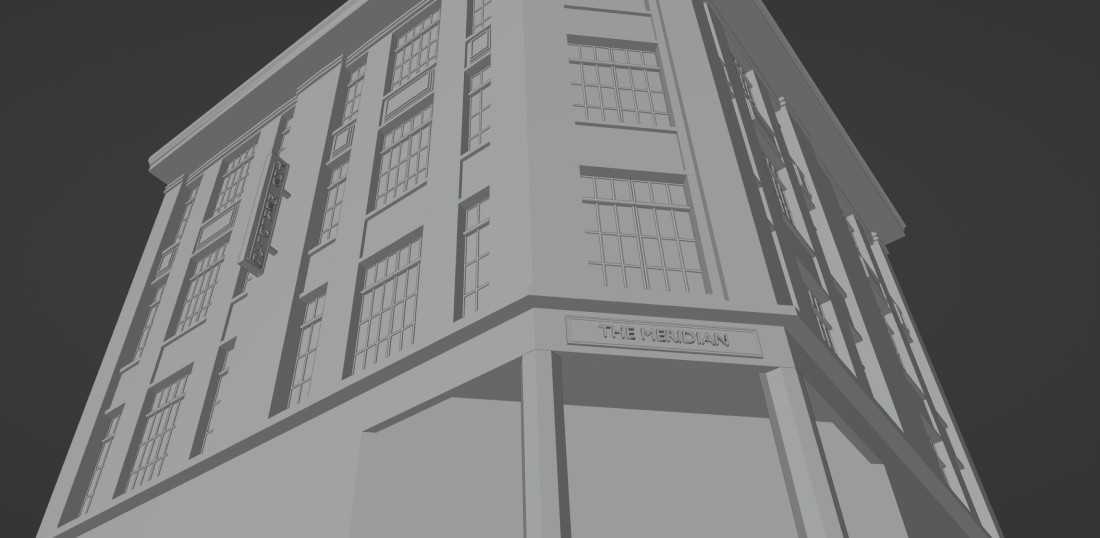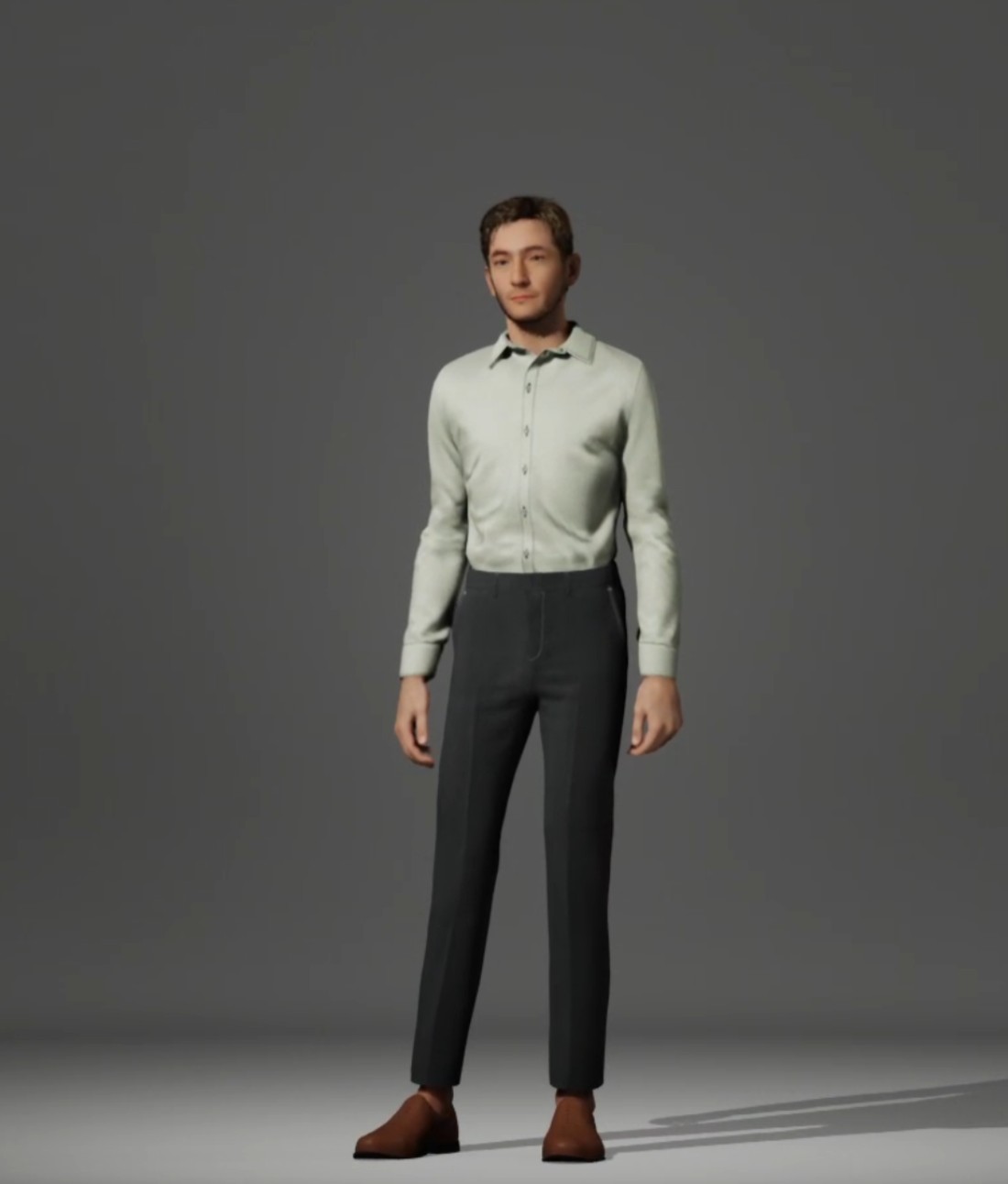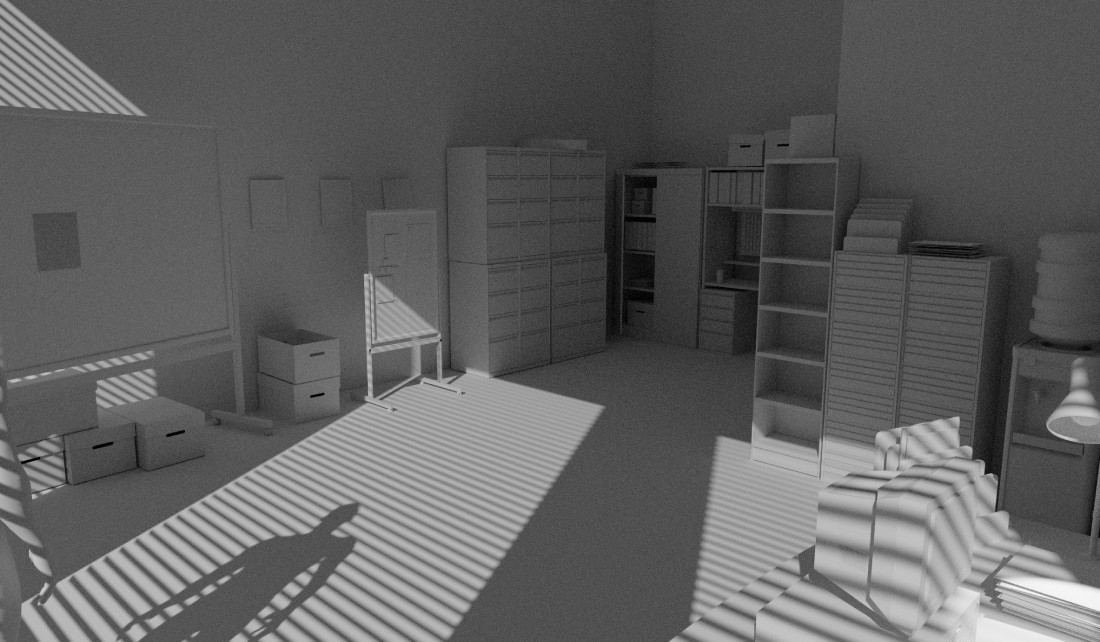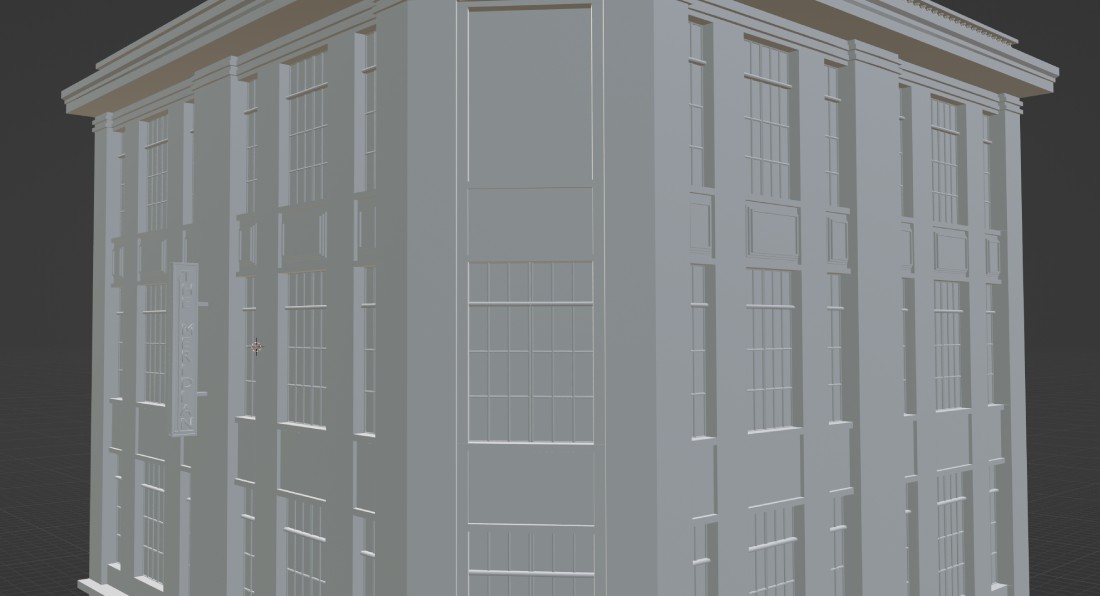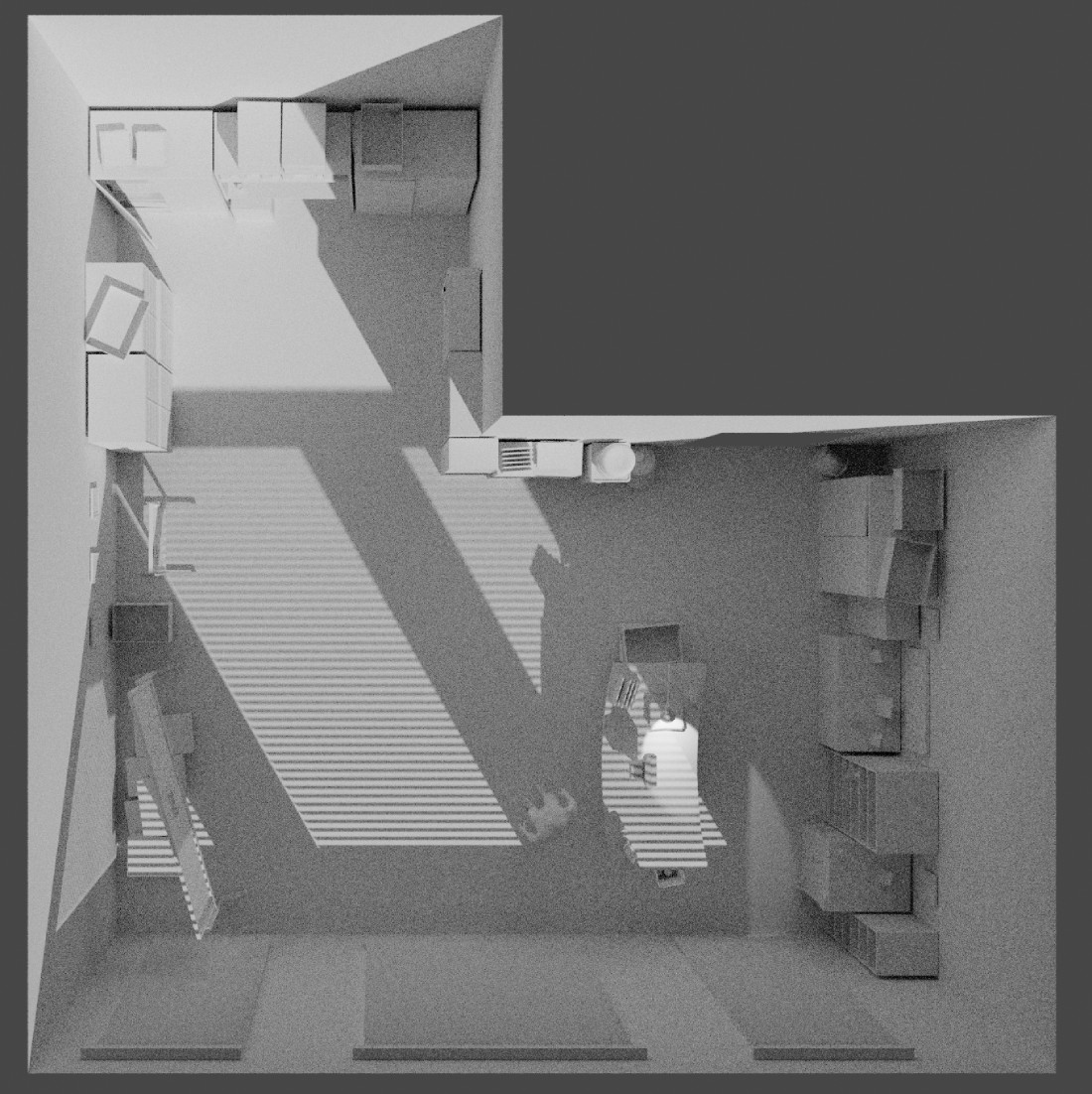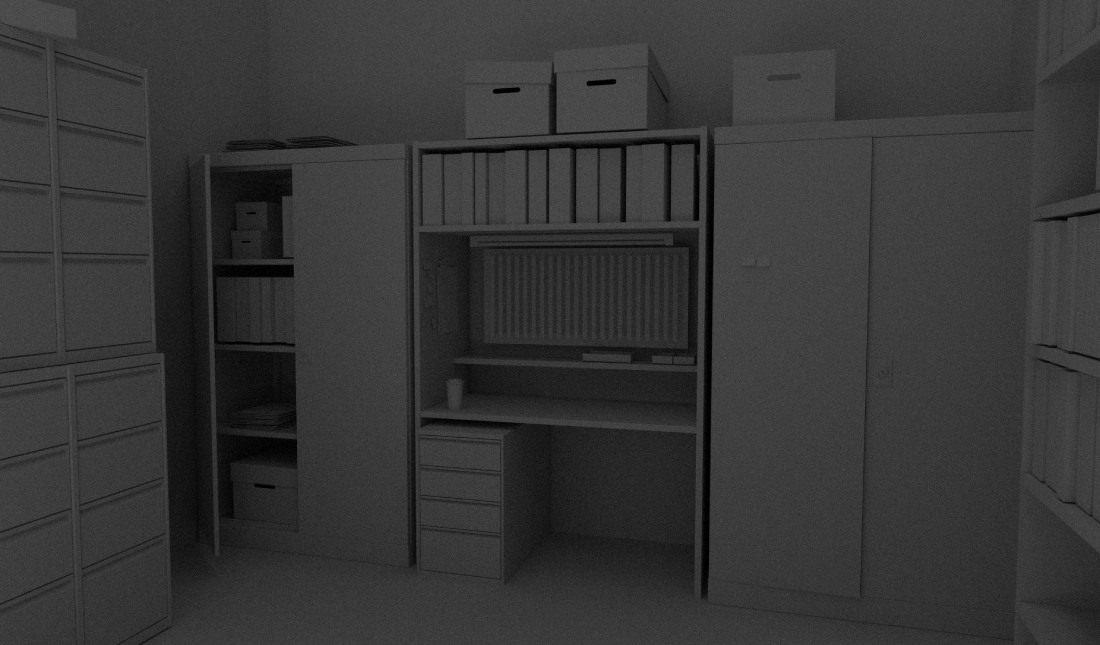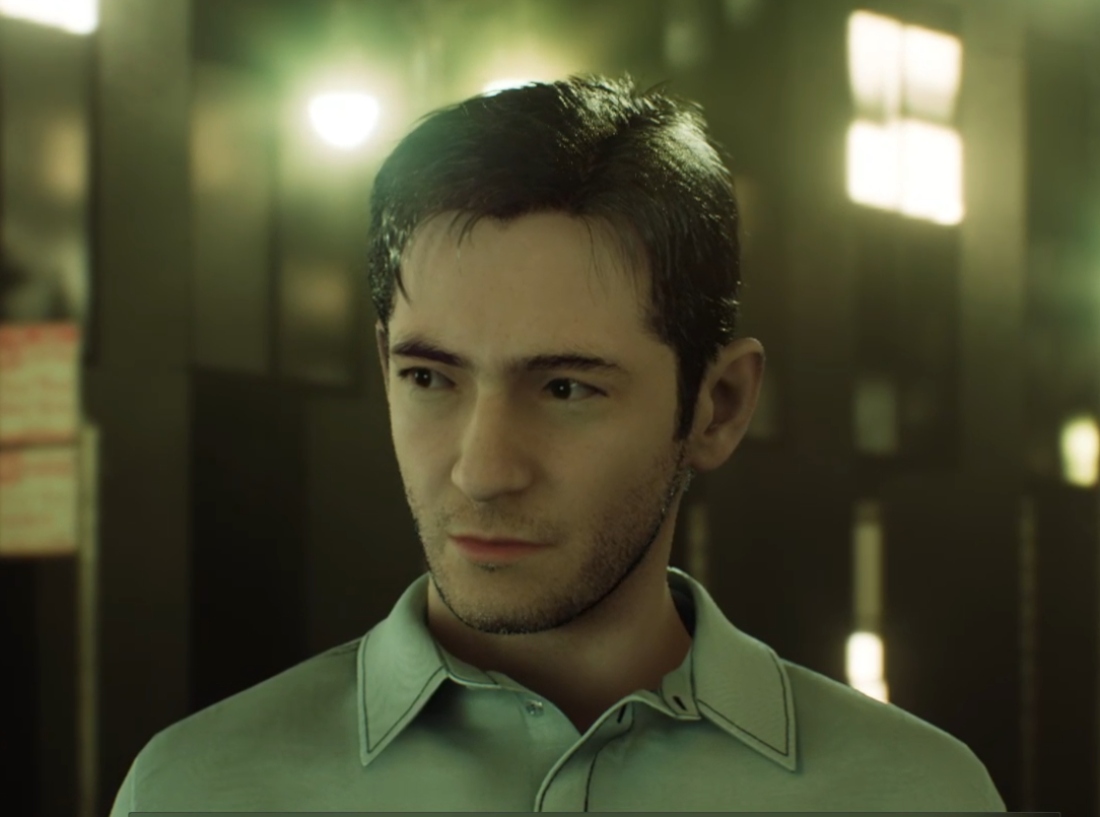1.1 Software
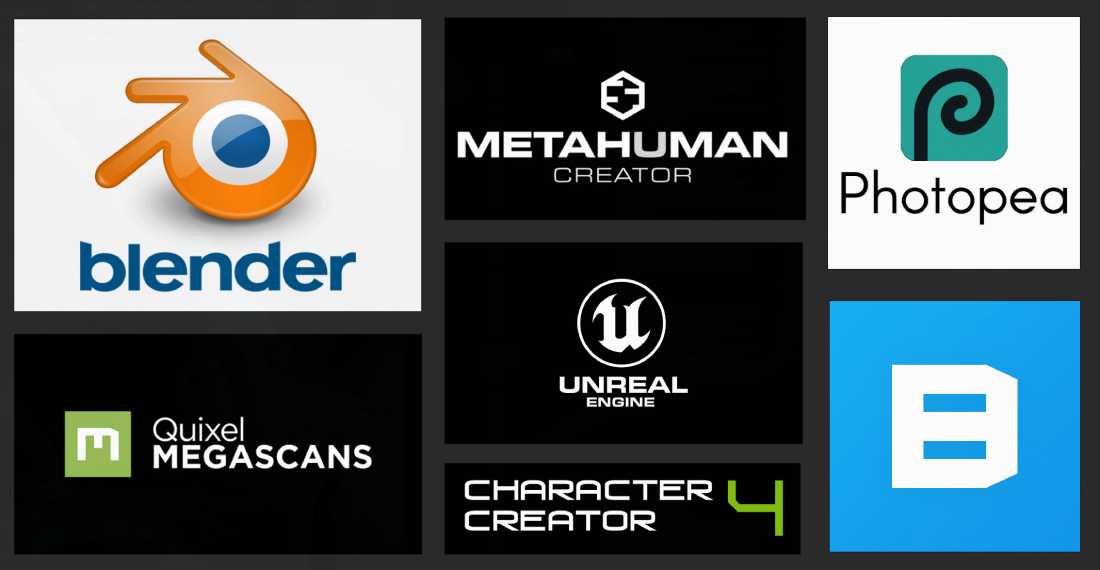
1.2 Concept
The base concept was described in the brief supplied by our initial client Enigmatic Studios. The basic overview was as follows:
Concerning the rest of the design, art and development choices the team was at liberty to decide its course.
1.3 Team Roles
My main role throughout the project was Lead 3D Art. One of my responsibilities was to create the office environment for the game. Although he project was advertised for 2nd and 3rd year DMD students I had an idea to recruit from various other departments. I took the initiative and after consulting with my lecturers and peers I started by contacting the Senior Lecturer in Media & Film Studies and the Academic Head of Department - English & Creative Writing requesting assistance to find talented students to fulfill positions in creative writing and sound design. Eight days and 50 emails and Teams calls later we had our full team. As time progressed and the need arose, I also helped out in character creation.
Original Team Members
Addditional Team Members
1.4 Deliverables
The project timeline span across both the 1st and 2nd semesters. A completed playable prototype was to be delivered at the end of Semester 2, albeit all members could freely design whether to stay for the full year or not. The client also had the following requests:
1.5 Initial Ideas
During the preliminary brainstorming session, we established the foundational perspective. The team collectively agreed to place the game into the 90's era and called it Case Closed. The main protagonist Alan who is also the antagonist, is a private investigator suffering from Dissociative Identity Disorder (DID).
From my personal perspective I truly hoped to create a marshy/swampy scene that has been on my mind for quite some time. Owing to the creative freedom we enjoyed I had a chance to create something I wanted. I was mainly inspired by a crime/mystery book titled A megfojtott Viking mocsara (The bog of the strangled Viking) by the popular Hungarian writer Leslie L. Lawrence. One of Blender Guru's Youtube video featured another inspiring abandoned house. (1.5.1)
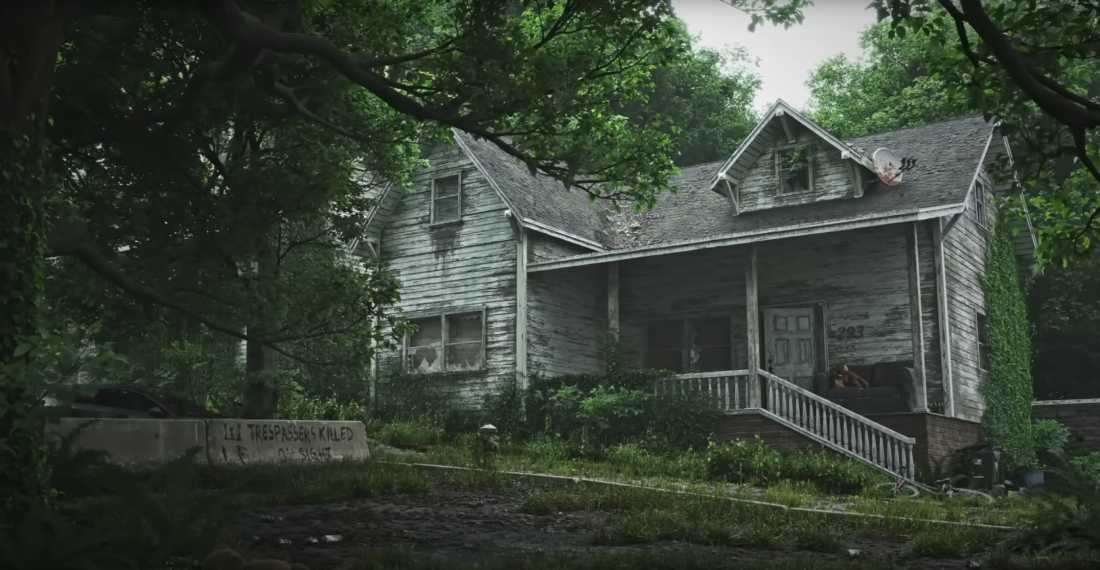
1.5.1
I started my research by gathering online imagery and made a PureRef moodboard consisting inspiring pictures of New Orleanian houses, marsh flora and fauna, rusty tools and props ideas for lighting and many more. (1.5.2) I found through previous experience that working with a large quantity of reference images warrant inspiration on many avenues.
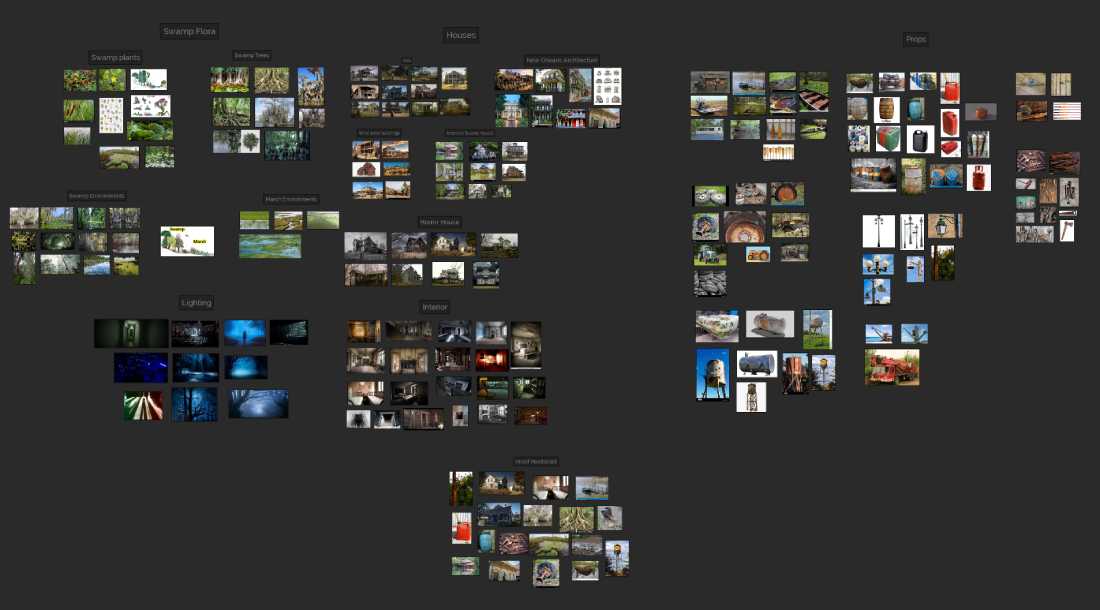
1.5.2
Finally the most prominent images were selected to form a small-scale moodboard for presentation purposes. (1.5.3) I made a quick blockout of the house to show my ideas to peers.(1.5.4)
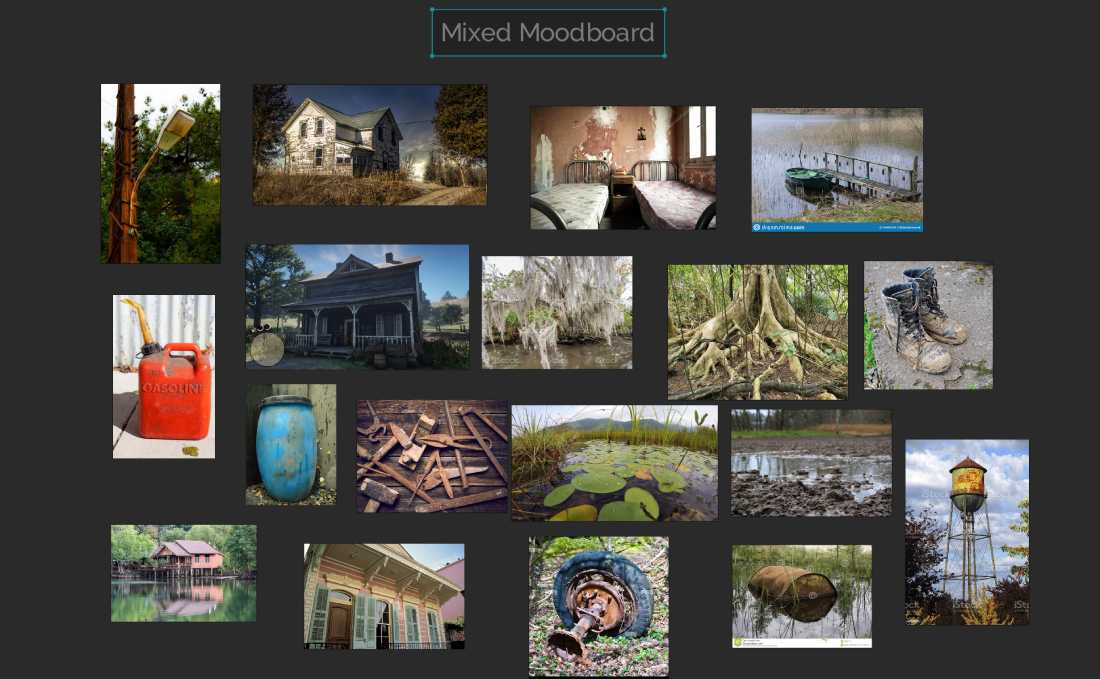
1.5.3
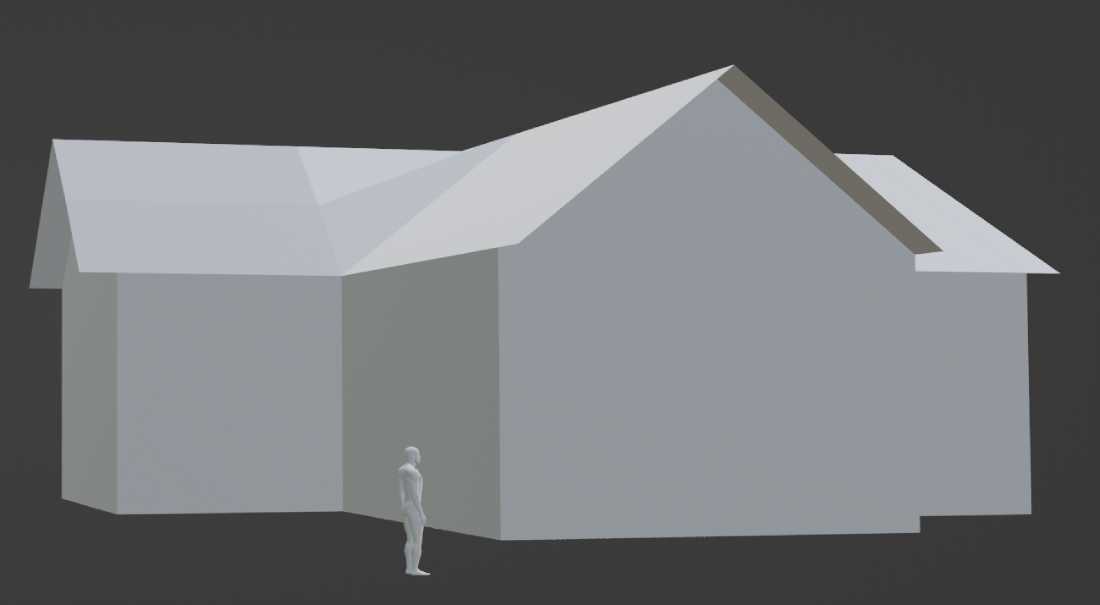
1.5.4
1.6 Concept Development
At the next team meeting (week 4) we concluded that in line with the story progression making the office building would be imperative. Consequently, the swamp scene was discarded and I started over my research. First I gathered a few generic images from the 90's to get an overall feel for the era, (1.6.1), then obtained references from psychological horror games such as Alan Wake, Alone in the Dark or The Stanley Parable (1.6.2) with the means to gain a better insight into the genre.
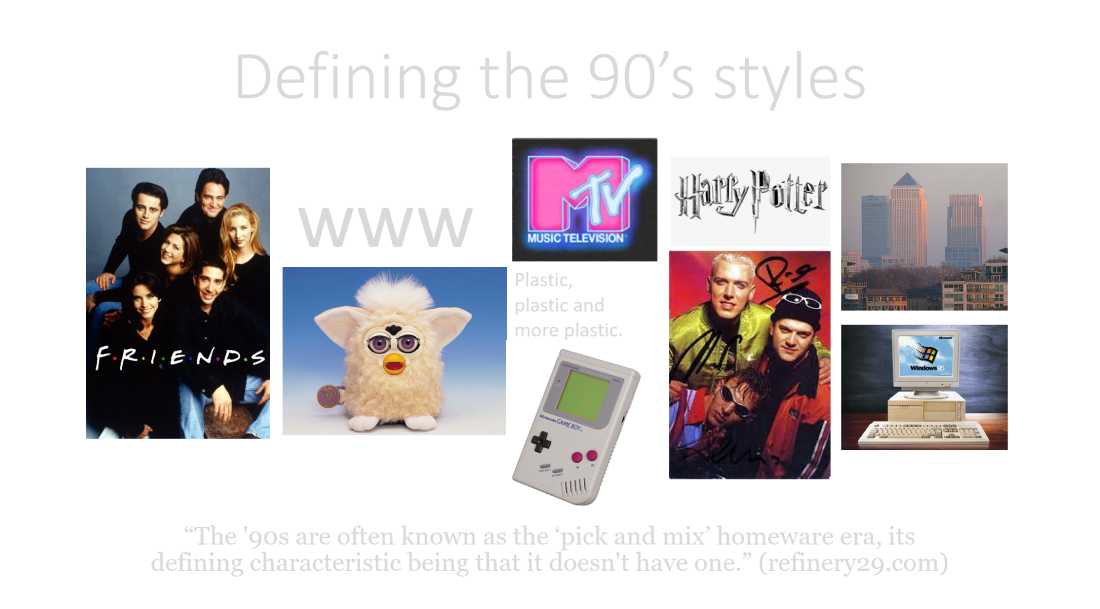
1.6.1
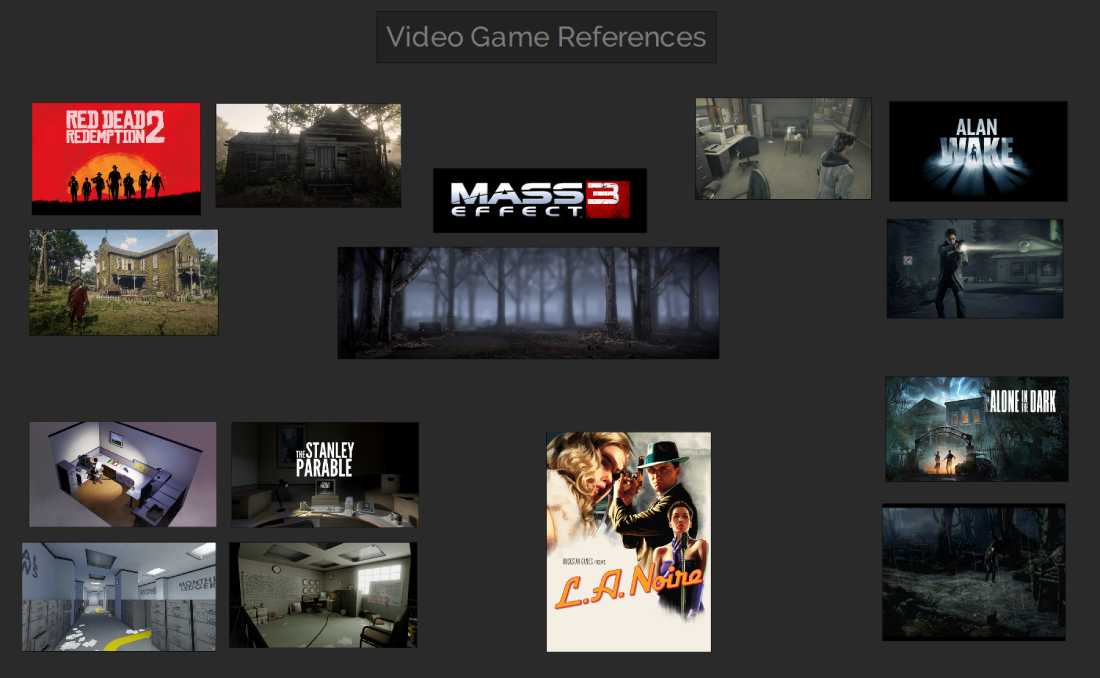
1.6.2
An extensive research and reference gathering followed focusing on the following areas from 1990s:
The full PI office (1.6.3) moodboard containing almost 200 images and a concise version (1.6.4) can be seen below.
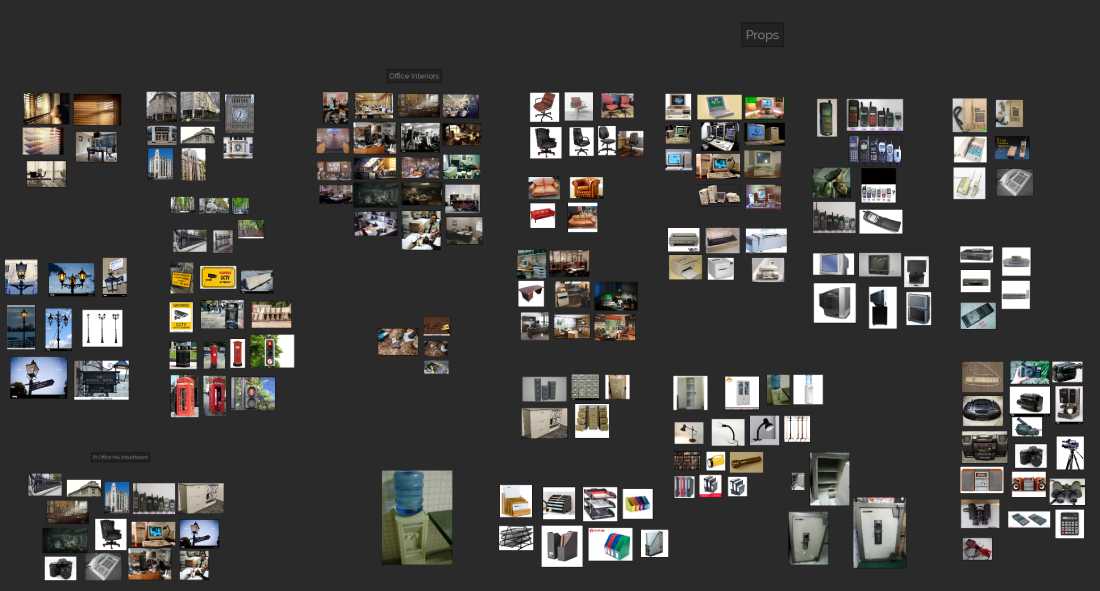
1.6.3
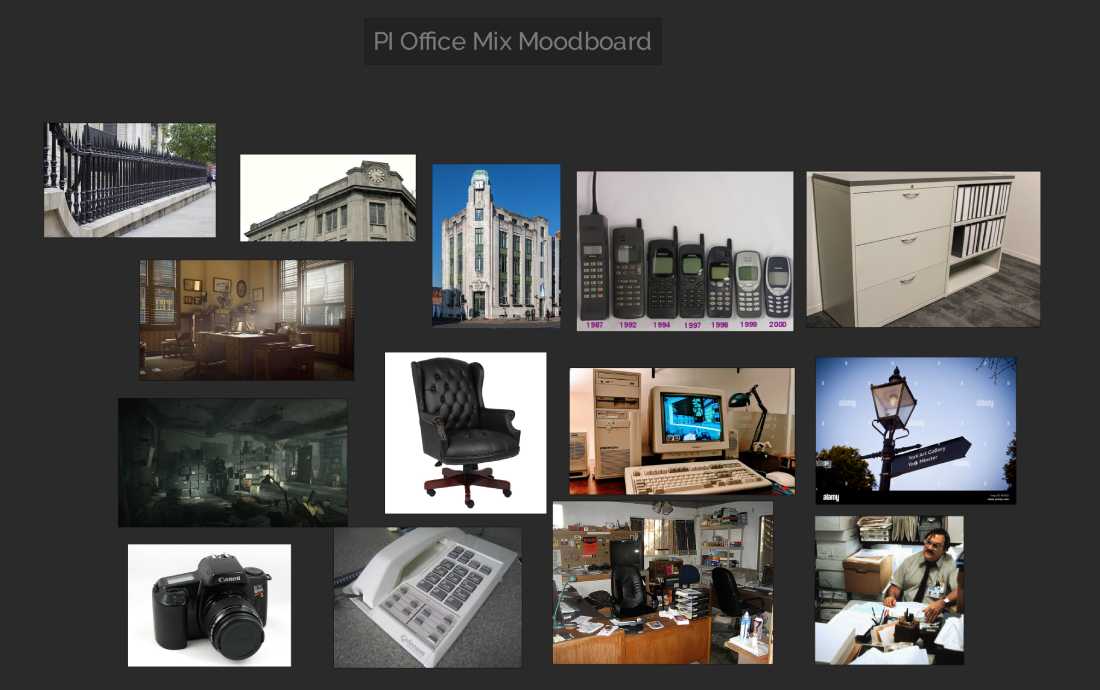
1.6.4
1.7 Modelling the Building
Whilst 90's detective offices would not be normally associated with Victorian or Georgian style buildings the reasoning was based on the subsequent thoughts:
As with all buildings or with all models for that matter, working out and adhering to proper dimensions is the utmost importance. The introduction of an average size (1.8m) human mannequin to the scene aided better distance estimation. An incorrectly scaled object will most likely to create issues when rescaling is attempted. The standard indoor ceiling height in conventional houses and flats is approximately 2.4 meters yet in Victorian or Georgian built residences this can easily double. I made a few blockout iterations so to achieve the desired shape. Then set the floors according to the aforementioned rationale. Step by step the more pronouncing features were added followed by the medial characteristics building towards higher fidelity. (1.7.1)
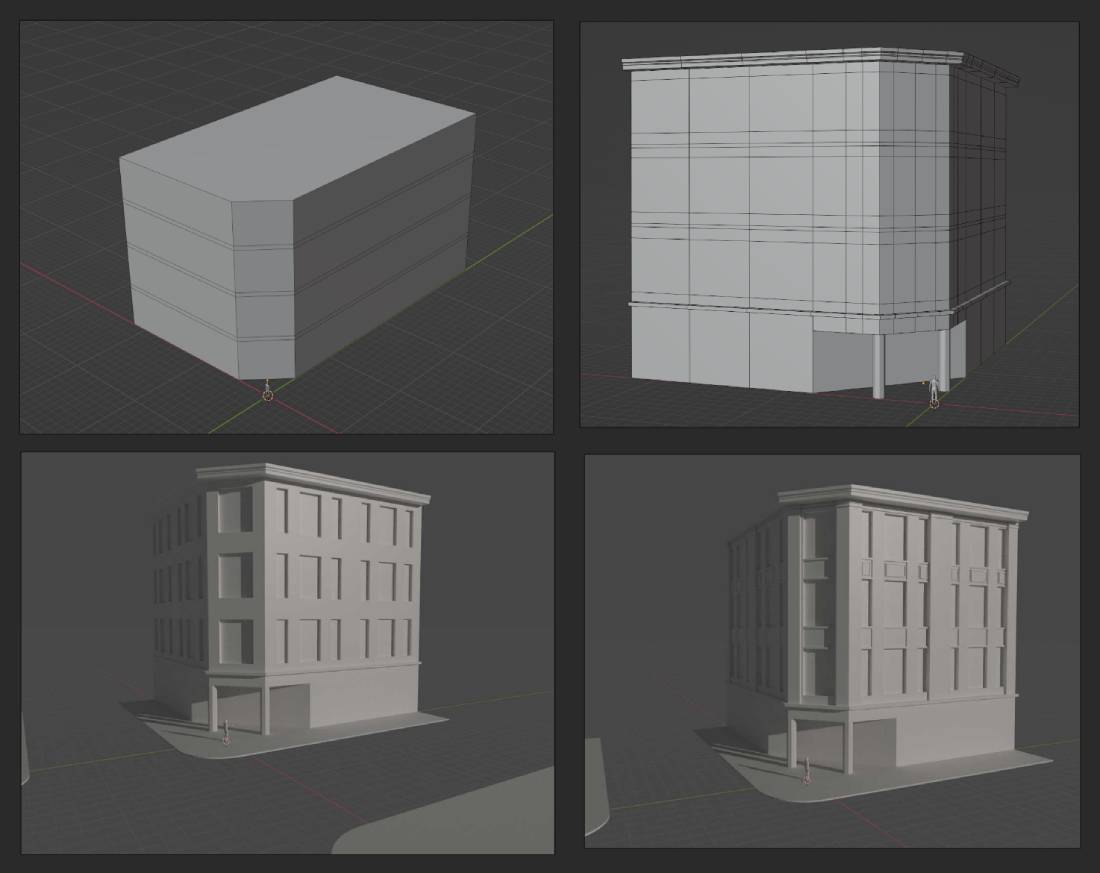
1.7.1
Next the roof features were created using the Array Modifier. I had some internal lighting ideas that required large windows to be implemented. This also suited to the overall architecture hallmarks. On couple of the reference photos a wall/tower clock can be observed. I really wanted to incorporate this and make a clock-room on the 3rd floor that would add another mystical location to the scene opening the possibility for interesting game mechanics.
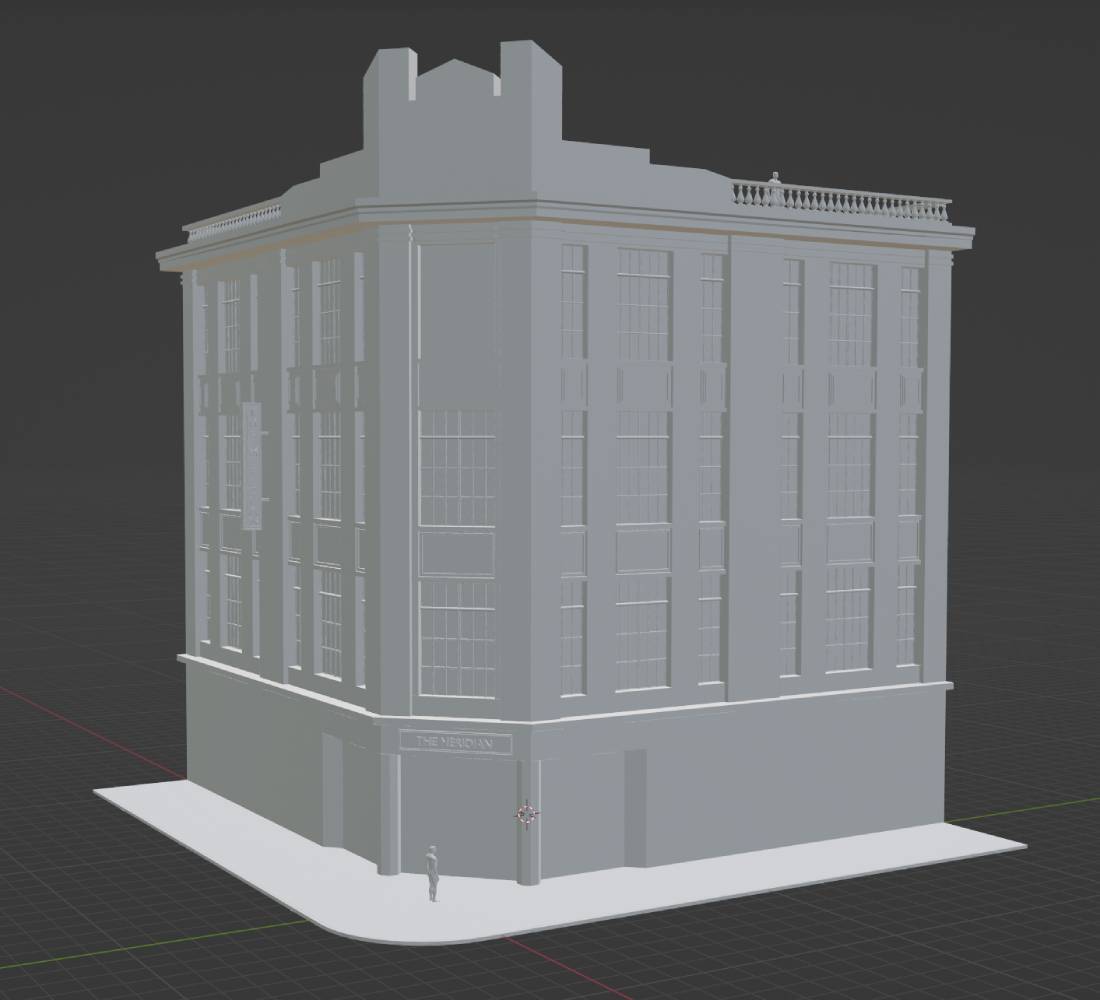
1.7.2
1.8 Prop Modelling
I intended to capture the 90's office indoor atmosphere targeting the PI lifestyle/profession. Several methods were employed to achieve this:
A collection of some of these are displayed on the next picture. (1.8.1)
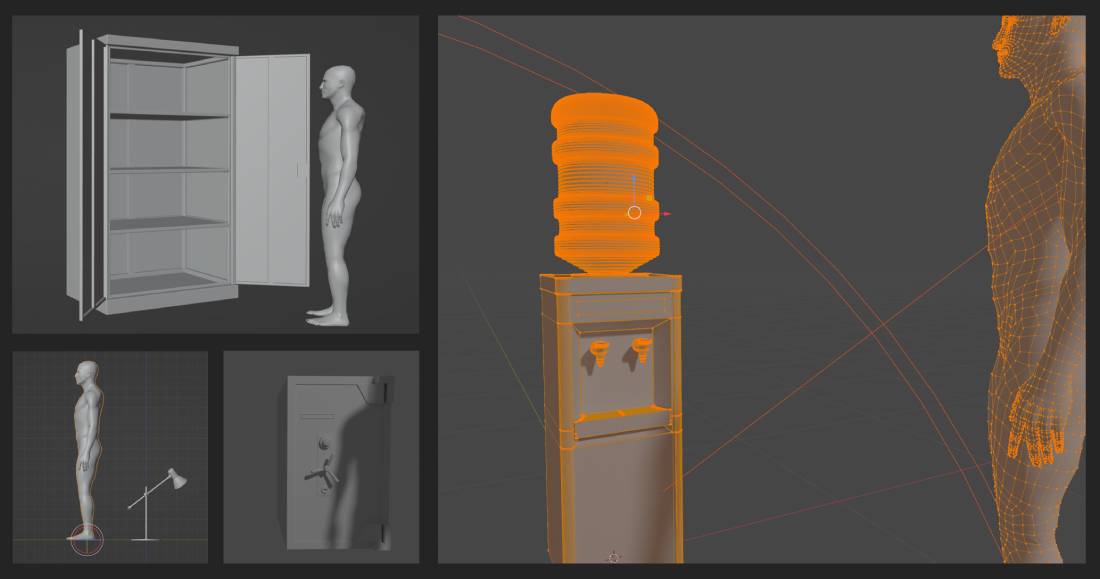
1.8.1
The prop modelling phase - given the immense number of items needed to be created - quickly exhausted the available time previously pre-planned for this task. The finished room holds hundreds of individual objects and even though some of these are slightly modified iterations the amount of work involved far exceeded the expected duration. This work phase was challenging at many instances, and I feel I learned a great deal of new techniques.

1.7.2
1.9 Lecturers' Feedback
After the second client presentation one of the lecturers suggested to change the office layout from rectangle to L-shaped since it looks overly spacious. (1.9.1) Beside the above amendments I also reduced the total area of the room by shortening wall lengths and widths. In addition, I intended to populate the barren areas with added chairs and a coffee table or sofa.
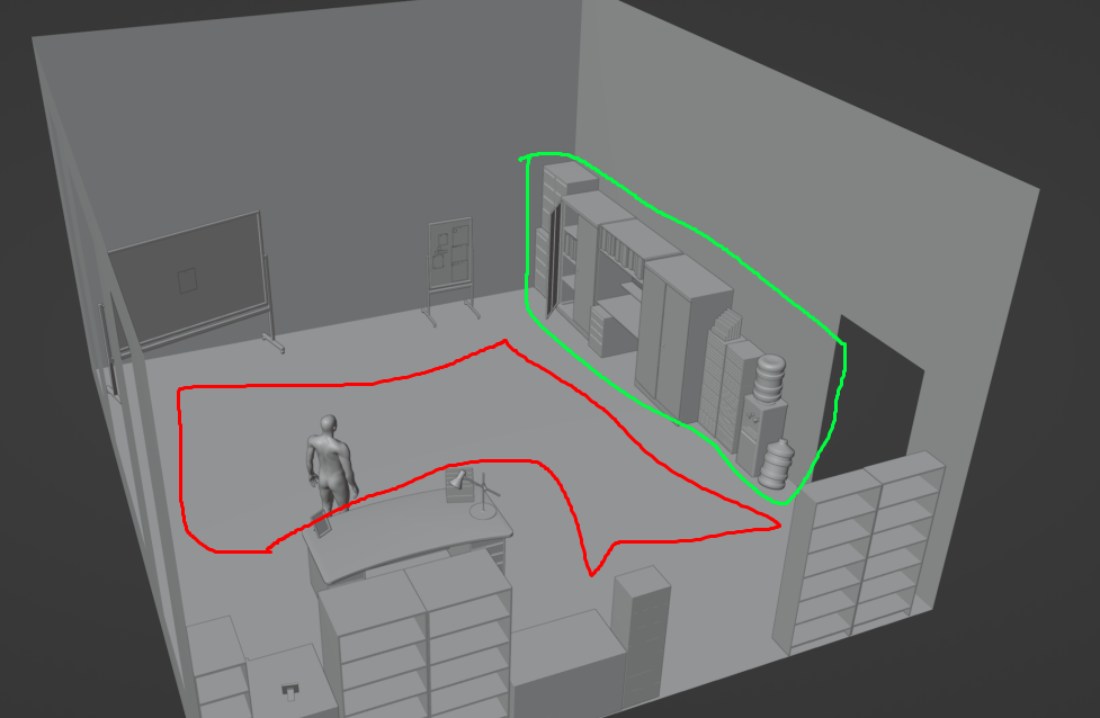
1.9.1
2.0 Character Creation
The team's character modeller Kirsty was modelling, rigging, and animating all monsters alone. Prior to the upcoming 2nd client presentation we thought it would be great to have at least a placeholder model for the main character. Since I had some past experience with modelling, I offered to assist. Provided the realistic nature of the game I decided to utilize 3rd party software to recreate the brilliant character concept (2.0.1) by Willow in 3D. This proved to be a great opportunity to broaden my knowledge concerning these applications.
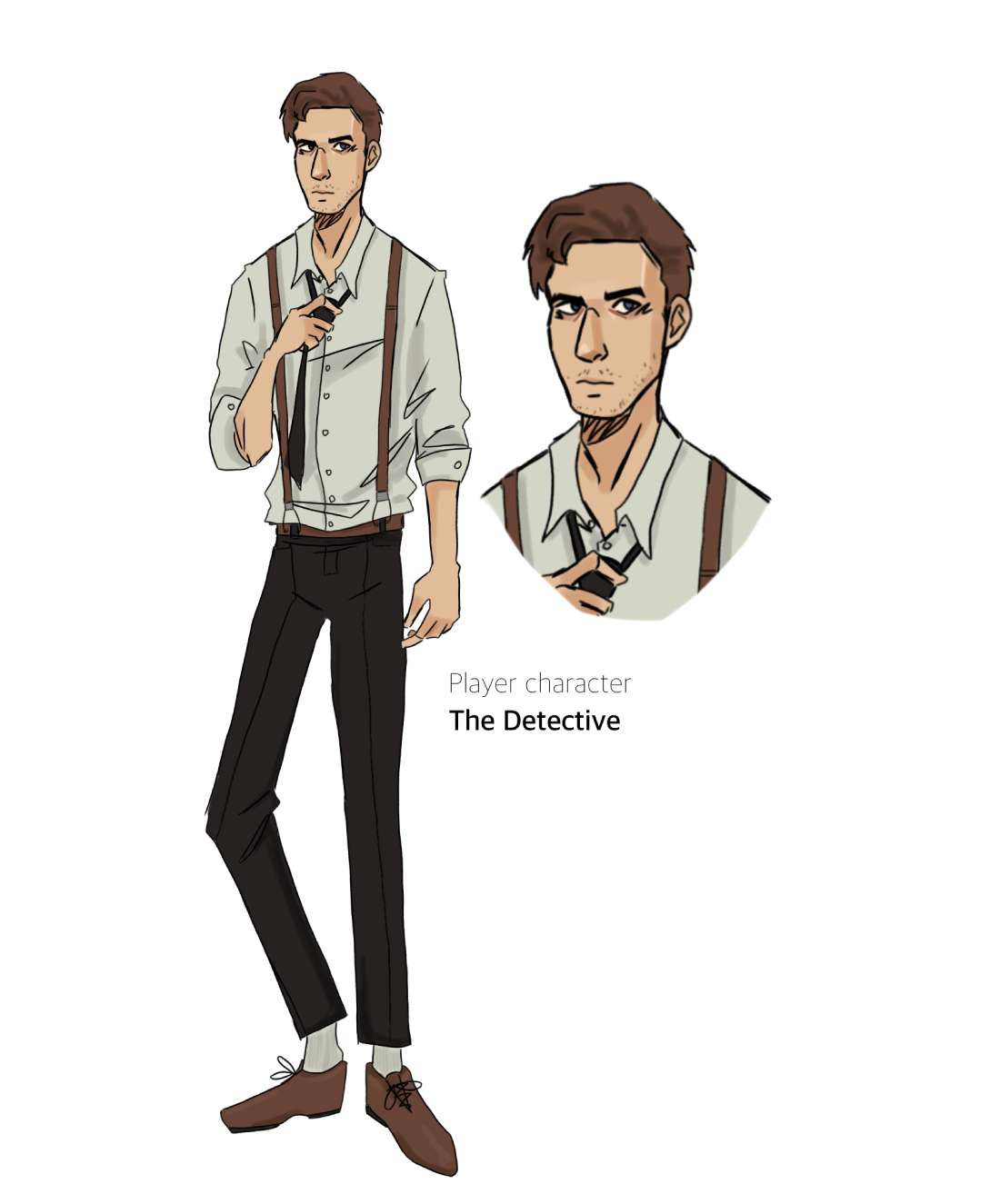
2.0.1
I experimented with a few applications. One of these was Character Creator 4 (CC4) an AI assisted picture to skin converter. If used as originally intended by uploading a photo of a person, the face feature recognition software could produce impressive results as it is demonstrated below (2.0.2). I uploaded a couple of photos of Patrick Stewart and Dwayne Johnson to test its capabilities. (As a sidenote; I intentionally used images of bold actors since seeing the limitations of the software I did not dive into hair reproduction) The main disadvantage was that we only had a drawn image of Alan thus CC4 could only project drawn facial details onto a realistic mesh. The outcome was unusable.
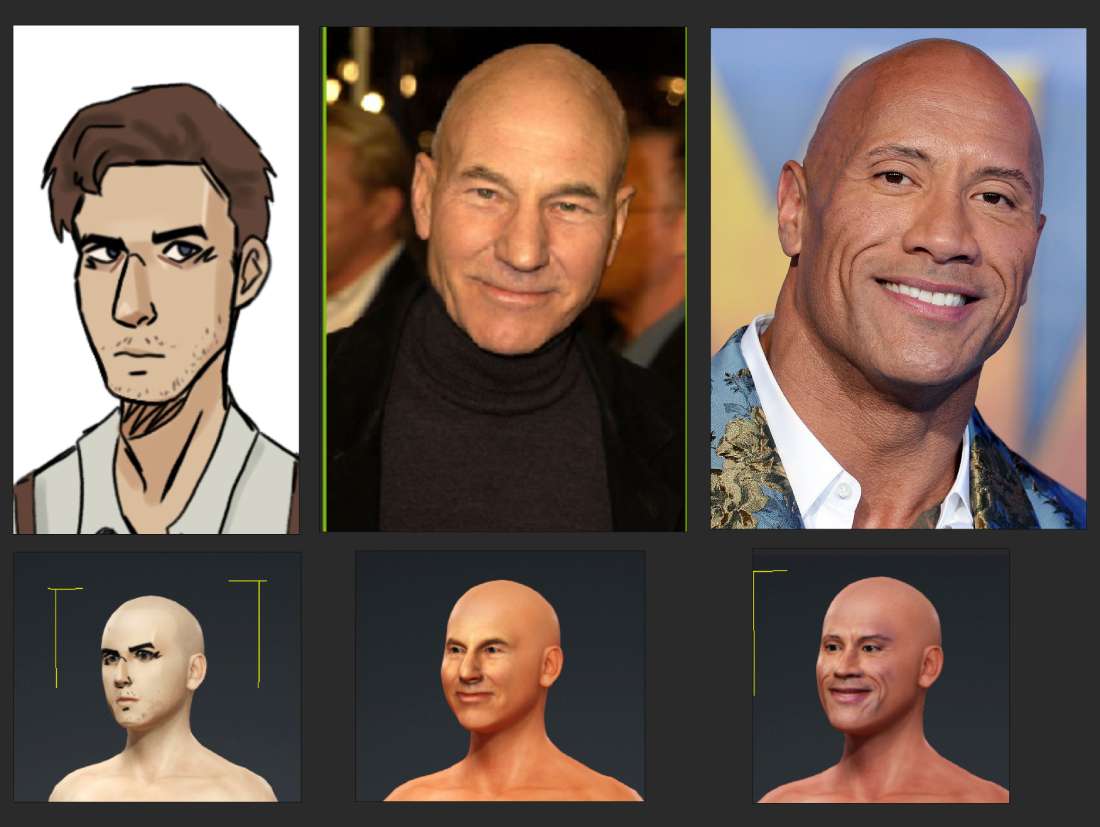
2.0.2
Following the failed attempts, I ventured into familiar territory. During a former client project, I fashioned two characters using Epic Game's Metahuman Creator. This innovative software has a library of highly realistic models. Beside resorting only to these pre-fabricate mannequins there are options to blend multiple of these into a 'child' dummy inheriting facial features from the 'parents' by moving dials.(2.0.3) Finally characters may be produced similar way as in game character generators work by choosing a base dummy and modifying its features by various sliders.(2.0.4)
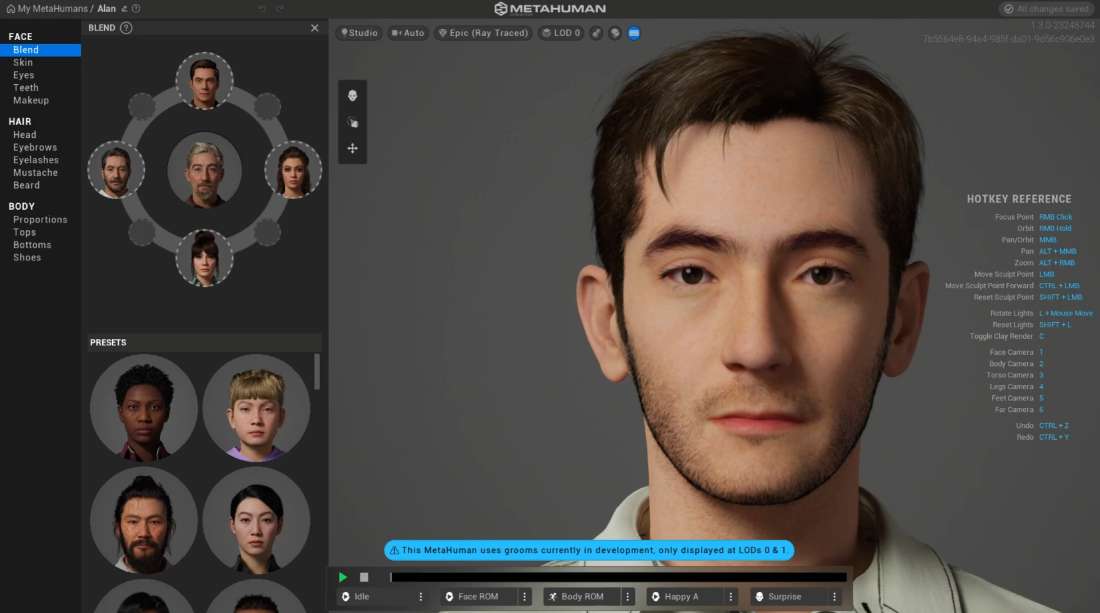
2.0.3
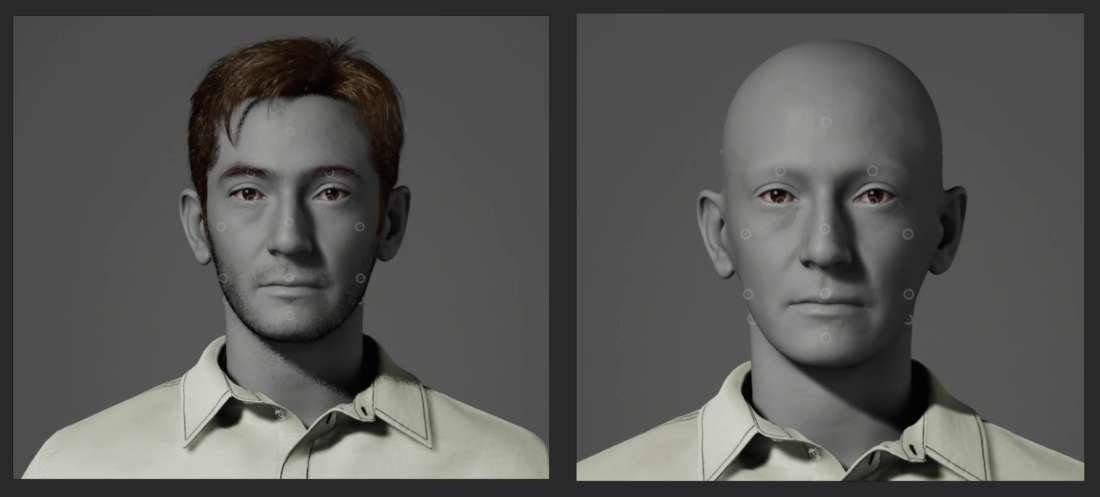
2.0.4
Metahuman creator unfortunately is not designed for reproduction from existing sources. The library of models surpasses 50 yet configurative options are still insufficient. The few days of experimentation yielded unaccepteble resemblance to the original drawing. Nevertheless, the constructable models come fully rigged with built in naming conventions,8 different LOD levels, flawless topology and amazing reality factor. For creating random character models is almost perfect.
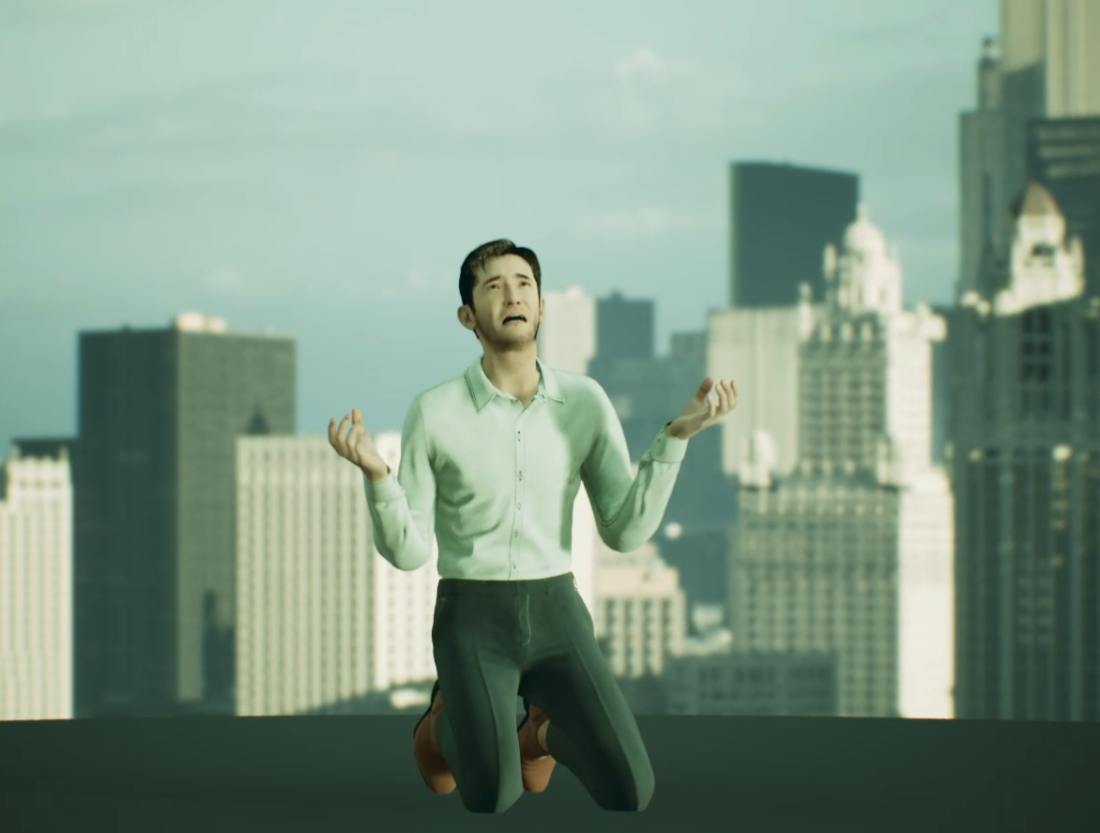
2.0.5
2.1 Time Management
The group agreed to set up a regular weekly meeting every Tuesday to discuss project matters or showcase our work. The pre-established and organised time management worked quite well until I got sick the 1st time this semester. Afterwards thanks to the scheduled contingency plans for each weekend I could have caught up with my commitments. Regrettably a second unexpected sickness rendered me incapable to work for over three weeks. The culmination of these issues with the added tasks such as recruitment and character modelling meant that I could not finish what I set out to do. The project needs to be finished by the end of the 2nd semester nevertheless I am positive that without the mentioned hinderances I would have produced fully finished work.
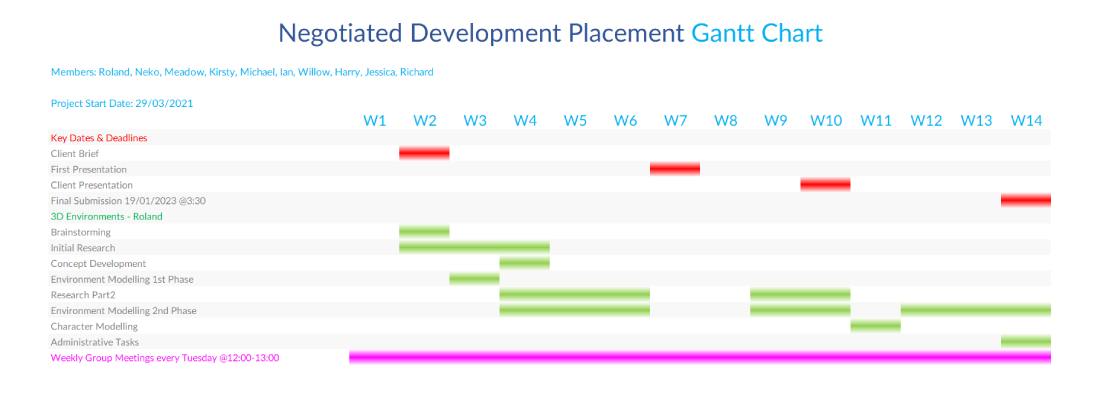
2.1.1
2.2 Conclusion
Projects such as the NDP always carry generous amount of opportunities for learning. This assignment was challenging in many ways, and I believe that by overcoming obstacles one can truly improve.
The team was brilliant although I felt that this time because of the earlier mentioned reasons I could not contribute sufficiently enough. On a positive note, beside my responsibilities I voluntarily partook in tasks such as the character modelling and managed the recruitment of 3 new members contacting and negotiating with several people in the process improving several soft and hard skills by doing so.
Due to various reasons the team collectively decided to cut ties with the client. In spite of this inconvenient turn of events we produced work to very high standards.
I am proud of the work I managed to complete and feel this project allowed me to improve myself.
2.3 Prototype Images
